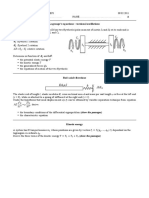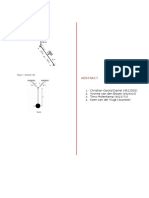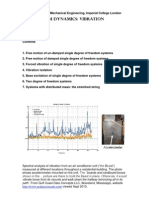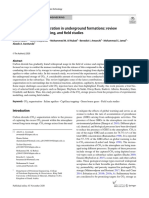0% found this document useful (0 votes)
22 views20 pagesLecture05-06 EquationsOfMotion
The document outlines the content of lectures on the vibration of mechanical systems, focusing on equations of motion, energy methods, damping measurement, and stability. It includes examples of deriving equations using Lagrange's method and discusses the effects of mass and stiffness on natural frequency. Additionally, it touches on numerical simulation techniques and damping measurement in dynamic systems.
Uploaded by
useranon1203Copyright
© © All Rights Reserved
We take content rights seriously. If you suspect this is your content, claim it here.
Available Formats
Download as PDF, TXT or read online on Scribd
0% found this document useful (0 votes)
22 views20 pagesLecture05-06 EquationsOfMotion
The document outlines the content of lectures on the vibration of mechanical systems, focusing on equations of motion, energy methods, damping measurement, and stability. It includes examples of deriving equations using Lagrange's method and discusses the effects of mass and stiffness on natural frequency. Additionally, it touches on numerical simulation techniques and damping measurement in dynamic systems.
Uploaded by
useranon1203Copyright
© © All Rights Reserved
We take content rights seriously. If you suspect this is your content, claim it here.
Available Formats
Download as PDF, TXT or read online on Scribd
/ 20





















































































